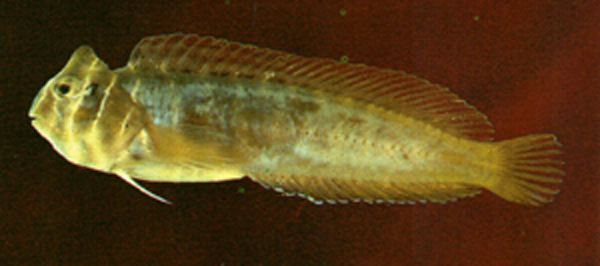| Blenniidae (Combtooth blennies), subfamily: Blenniinae |
|
|
demersal; marine |
| Northwest Pacific: southern Japan and the coast of China. |
|
Dorsal spines (total): 12-12; Dorsal soft rays (total): 19-22; Anal spines: 2-2; Anal soft rays: 21-24. Head without cirri. Both sexes with a fleshy blade-like crest on occiput. Lower end of gill opening above posterior fin base. Sensory pores in infraorbital and interorbital canals usually 8 and 2 respectively |
| Adults rarely enter brackish water. Attain less than 8 cm TL. Oviparous. Eggs are demersal and adhesive (Ref. 205), and are attached to the substrate via a filamentous, adhesive pad or pedestal (Ref. 94114). Larvae are planktonic, often found in shallow, coastal waters (Ref. 94114). |
|
Least Concern (LC); Date assessed: 27 March 2009 Ref. (130435)
|
| harmless |
Source and more info: www.fishbase.org. For personal, classroom, and other internal use only. Not for publication.

